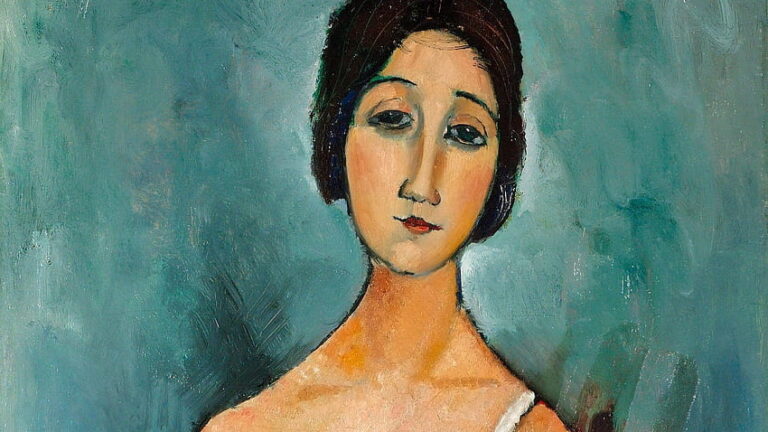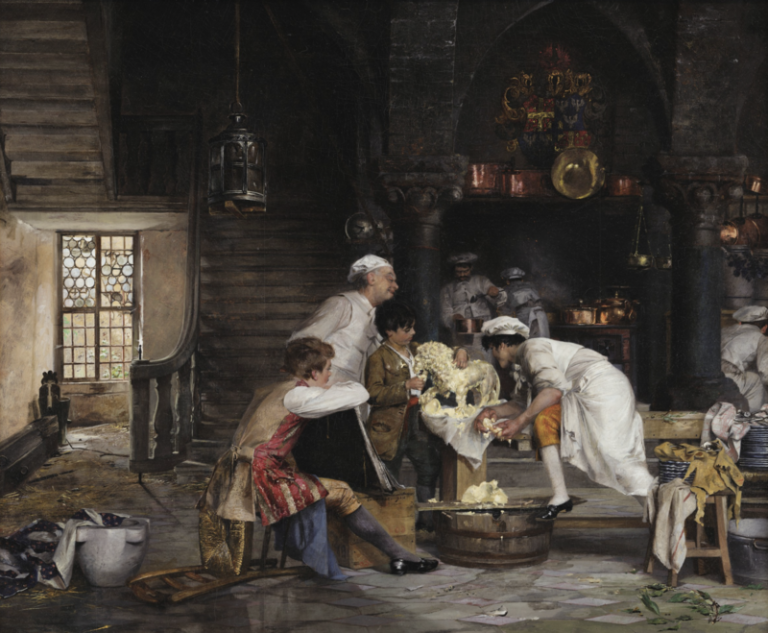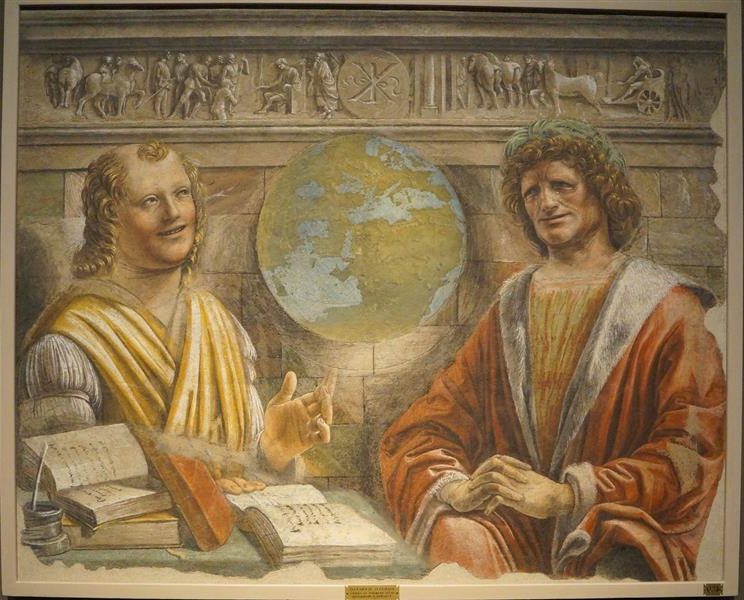Winston Churchill Paintings Unveiling the Artistic Legacy
Born: 30 November 1874, Woodstock, England
Death: 24 January 1965, London, England
Art Movement: Impressionism
Nationality: British
Influenced by: John Rothenstein
Institution: Harrow School
Winston Churchill Paintings Unveiling the Artistic Legacy
Early Artistic Endeavors
Winston Churchill, known primarily as a statesman, began painting in his 40s. His interest grew due to encouragement from friends and artists. His early work reflects his journey from experimentation to a more developed style.
Turn of the Century Inspirations
Churchill’s first brush with painting came around 1915. He was inspired during a family holiday and soon found solace in art amidst political turbulence. Sir John Lavery, a neighbor and established artist, played a crucial role here. He and his wife Hazel offered guidance. Their advice helped Churchill move from simple watercolors to oil painting, adding depth to his work.
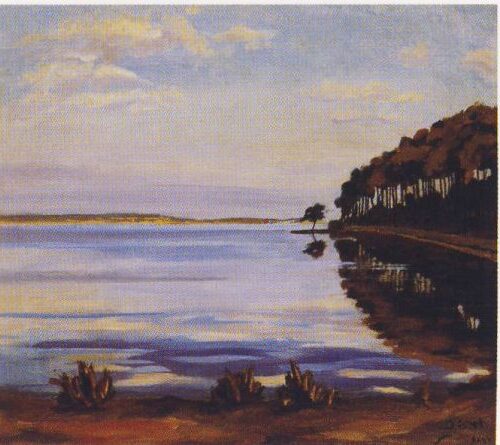
View at Mimizan (1920) by Winston Churchil
This phase marked Churchill’s initial transformation into a passionate painter. His early pieces reveal his experimentation with techniques and colors, laying the foundation for his future artistic pursuits. This period also showed how much Churchill relied on his intuition and desire for personal expression through art.
Churchill and the Visual Arts
As Churchill’s interest deepened, his artistic pursuits became more serious. In the years following, he created a studio at his beloved home, Chartwell. This space allowed him to explore painting away from political life. Sergeant Murray, who often accompanied him, provided help with gear and took photos for his reference.
Churchill’s artistic endeavor was never just a hobby. He painted more than 500 pieces, demonstrating his commitment. Despite being a Member of Parliament and Secretary of State for the Colonies, art remained a crucial aspect of his life. This balance between politics and art gave him an outlet for stress and a means of personal enjoyment.
Churchill’s Painting Techniques
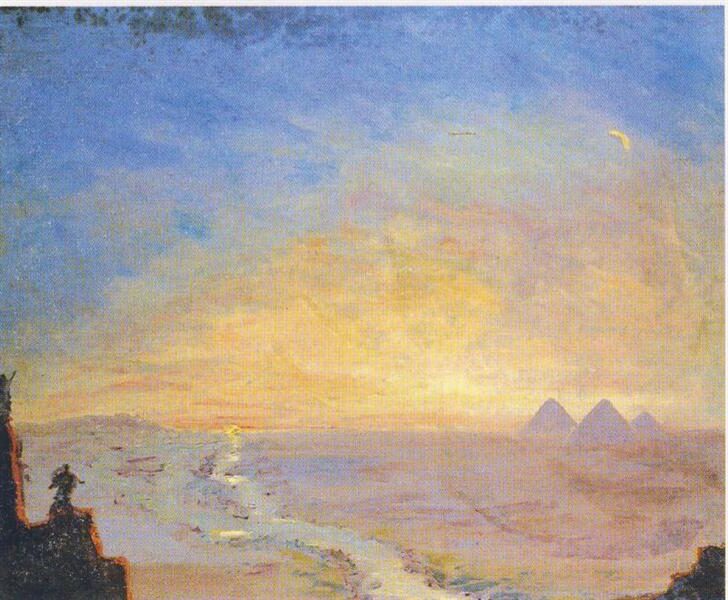
Distant View of the Pyramids (1921) by Winston Churchill
Winston Churchill, known primarily as a statesman, also found solace and fulfillment in painting. He embraced techniques that demonstrated his affinity for Impressionist styles and his personal approach to experimenting with colors and form.
Influence of Impressionism on Churchill
Churchill was deeply influenced by Impressionism, which emphasized capturing light and natural settings. He admired artists like Paul Cézanne and Henri Matisse. Their use of color and form inspired him to adopt similar elements in his own work.
Churchill often chose oils for their rich texture. Painting “en plein air,” or outdoors, was a favorite technique. This allowed him to capture spontaneous scenes with vivid colors. His landscapes reflect the influence of Impressionist and Post-Impressionist styles, with loose brushwork and a focus on light.
Churchill’s Approach to Painting
Churchill’s painting methods reflected his thoughtful yet adventurous nature. In his book, Painting as a Pastime, he discussed how painting helped him relax. He often started with broad strokes, adding details later. This technique gave his work a sense of movement and texture.

Racecourse, Nice (1921) by Winston Churchill
He liked using bold colors, similar to those favored by Cézanne and Matisse, yet he always added his own twist. Churchill preferred a direct approach, working quickly to capture initial impressions without overthinking the process. This strategy helped him convey the essence of his subjects.
Themes and Subjects
Winston Churchill was not only a prominent historical leader but also a dedicated painter. His art often captured the beauty of natural landscapes and the elegance of still life subjects, revealing his deep appreciation for the world around him.
Portrayal of Landscapes and Seascapes
Winston Churchill cherished painting landscapes and seascapes. Many of his works reflect his visits to places like Morocco and France. His painting “Koutoubia Mosque” is a notable example, inspired by his time in Marrakech.
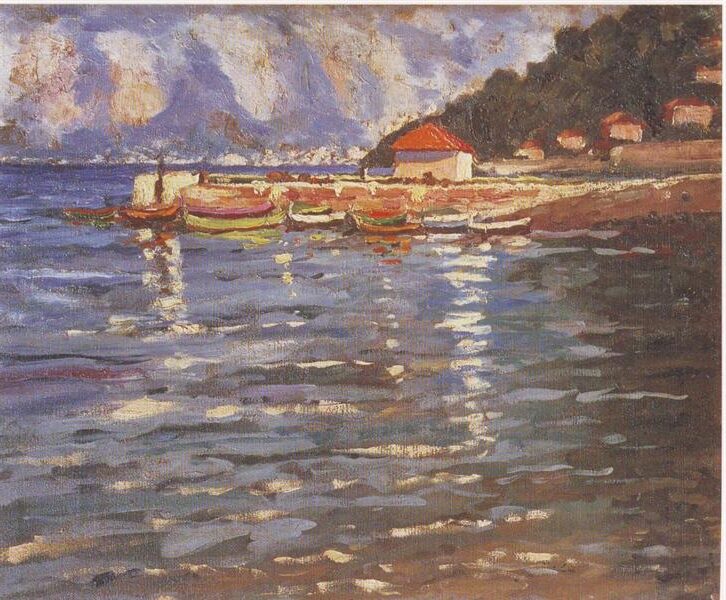
The Harbour at St. Jean Cap Ferrat (1921) by Winston Churchill
His time at Chartwell also inspired many landscape paintings. The gardens and surrounding countryside provided him with many subjects. These picturesque settings allowed him to practice capturing light and shadow, a skill he honed over years of painting.
Churchill’s Still Lifes and Portraits
Churchill’s interest in still lifes and portraits reveals another side of his artistic journey. He viewed these subjects as a chance to find beauty in everyday objects. His still life paintings often depicted flowers and delicate arrangements, showing careful observation and attention to detail.
In portraits, Churchill captured personal expressions and identities. He occasionally painted self-portraits, reflecting his own mood and experiences, especially after significant events in his life, like the Dardanelles expedition. He used these works to express emotions that he could not easily convey in other forms.
Churchill’s Role in Art World
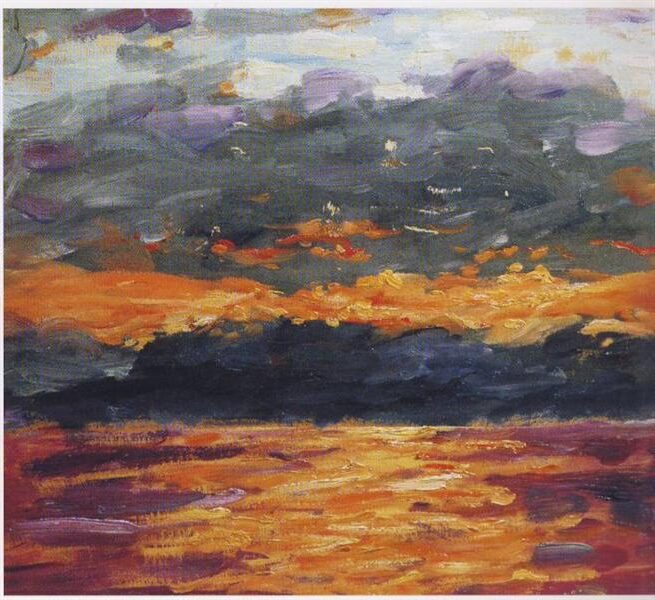
Sunset over the Sea (1923) by Winston Churchill
Winston Churchill’s contributions to the art world are significant despite his primary fame as a British Prime Minister. Painting became a vital respite for him, and his works have gained appreciation and been featured in prestigious exhibitions.
Recognition and Exhibitions
Winston Churchill’s paintings received substantial recognition over time. One of his notable accolades was being named an Honorary Academician Extraordinary by the Royal Academy of Arts, a rare honor granted to those who have made a substantial contribution to the arts.
Many of Churchill’s artworks have been part of several exhibitions, including a major retrospective at the Royal Academy of Arts in 1959. This exhibition showcased 61 of his paintings, attracting critical acclaim.
The National Churchill Museum frequently displays his work, bridging his political legacy with his artistic achievements. His paintings also appear in auctions, like Sotheby’s, capturing interest for their historical and artistic value.
Churchill as an Amateur Painter
Churchill took up painting later in life, amid his demanding political career. Described primarily as an amateur painter, his style was rooted in British Impressionism. He began painting during a family holiday in 1915, at a low point during World War I.
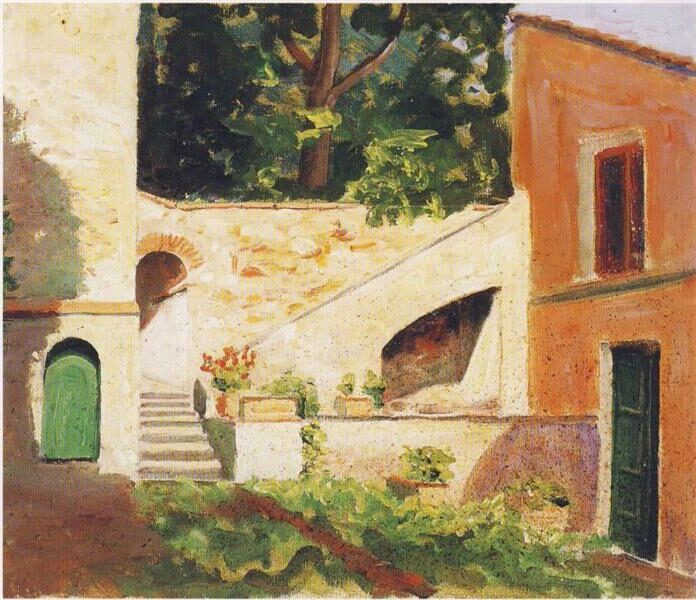
Shadows on a Staircase in Southern France (19th or 20th century)
Churchill’s passion for painting provided him with solace and a means to express creativity. He created a studio at his home in Chartwell, painting many landscapes and other subjects. Despite painting as a hobby, Churchill had a distinctive style and preferred vibrant colors and strong brushwork.
His works have been compiled and studied, with some efforts to produce a Catalogue Raisonné, recording his artistic output. Though not regarded as a professional artist, Churchill’s artistic endeavors added another dimension to his remarkable career.
Churchill’s Legacy in Arts
Winston Churchill’s artistry left a marked impression on art collections worldwide and modern art history. His works, reflecting his statesman life, are displayed both in personal collections and public exhibitions.
Public and Private Collections
Churchill’s paintings can be found in prestigious public and private collections globally. Many of his works are held by the Churchill family and prestigious institutions like Blenheim Palace and the Churchill Society.
The Mildred Lane Kemper Art Museum and Heather James Fine Art have featured his paintings, showcasing them to a broader audience. Adding to his legacy, Churchill’s paintings have been displayed at exhibitions across various continents, including North America, Europe, and Australia.
His art gained further recognition when President Eisenhower arranged a public exhibition in the United States. Churchill’s status as a British statesman and celebrated wartime leader drew significant attention to his creative works, contributing to his artistic acclaim.
Impact on Modern Art Historiography
Churchill’s impact on modern art historiography lies in how his work is studied in relation to his influential political career. His paintings, many created during periods of personal challenge, such as recovery from depression after the Dardanelles expedition, provide unique insights.
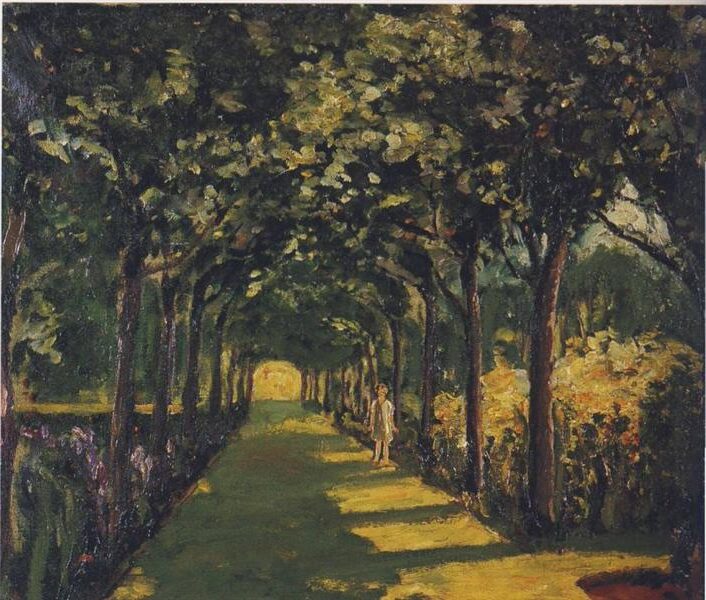
Daybreak at Cassis, near Marseilles (1920) by Winston Churchill
Art historians like Timothy Riley have examined his contributions, noting how his artistic pursuits offered a respite from his political duties. The Wallace Collection’s exhibitions interspersed Churchill’s art with his writings on painting, highlighting his dual talent.
Studying Churchill’s paintings enriches historical research by merging insights from his statecraft with his artistic vision. His works offer a multidimensional understanding of a man known primarily for his political achievements, showing the influence of his leisure pursuit on his broader legacy.
Frequently Asked Questions
Winston Churchill, a renowned leader and artist, created many paintings. His works are cherished for their beauty and historical value. This section will address common queries related to Churchill’s art, from authentication to public exhibitions.
How can one authenticate a painting attributed to Winston Churchill?
Authentication involves verifying Churchill’s unique style and comparing signatures. Experts often examine provenance records and consult with specialists familiar with his work to ensure authenticity.
Where can one view exhibitions of Winston Churchill’s artwork?
Churchill’s paintings are displayed at several museums, including the National Churchill Museum in Missouri. Art galleries occasionally hold exhibitions, showcasing both his originals and reproductions.
What are some iconic paintings created by Winston Churchill?
Some of Churchill’s well-known paintings include “The Goldfish Pool at Chartwell” and “A View from Chartwell.” These works reflect his love for landscapes and capture the serene beauty of his surroundings.
Can you list Winston Churchill’s paintings that have been controversial?
Churchill’s art rarely sparked controversy; however, discussions sometimes arise about the high auction values of his paintings. Certain works attract attention due to their historical connections.
What is the historical significance of Winston Churchill’s paintings?
Churchill’s paintings offer insight into his personal life and interests. They highlight his passion for art as a retreat from his political duties and reveal aspects of his character and worldview.
How many paintings did Winston Churchill complete in his lifetime?
Winston Churchill created over 500 paintings during his lifetime. His dedication to art was profound. Painting remained a constant hobby throughout his years in public service.





